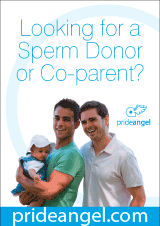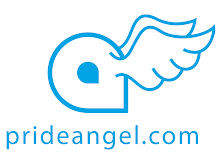Thursday, 31 October 2013
LGBT families and children can benefit from picture books designed for them
LGBT families and children can benefit from picture books that are designed to cater for them.
I once asked a lesbian I know who is raising children with her wife what her favourite LGBTQ picture books were. She told me she didn’t have any. I wondered why not and she replied, “Because my kids can see their lesbian mums at home. They don’t need to read about it, too.”
This answer shocked me, because we know that children want and need to see reflections of themselves and their families in the books they read (and also in the TV shows and films they watch). If they don’t see people who are like them, they begin to worry if they are abnormal, or if something is wrong with themselves or their families. They may also feel lonely and scared.
Families with two mums or two dads have generally thought a lot about how to make and raise their children and also about how to explain their family set-ups to their kids. They generally have a sense of when it might be appropriate to tell their kids about, say, surrogates or sperm donors, or how to explain adoption or in-vitro fertilisation. But they don’t always know what to do beyond the factual level.
And this is where fiction comes in. Fiction is a wonderful tool that lets readers of all ages learn and try out new experiences and ideas, but it also helps readers feel comforted or entertained. For children of LGBTQ parents, literature helps them realise just how normal and acceptable their families are. For example, the children of the lesbian I previously mentioned might not know any other kids with two mums or two dads, and they might worry that their family is weird or is something to be ashamed of. If they had access to books that featured other families like theirs, they would know that they aren’t the only children to have two mums or the only children to have been created using sperm from a donor who deposited at a fertility clinic. Literature would connect them to other people who are like them, and this would give them confidence about their lives and their situations.
So what are some of the best LGBTQ picture books? Not all of them feature LGBTQ parents, but even the ones that don’t will help remind children that there is nothing immoral or strange about being LGBTQ and also that LGBTQ people have lives that aren’t so different from heterosexual or cisgender lives. Here are a few of my favourites:
Donovan’s Big Day by Lesléa Newman: Newman is arguably the preeminent author of LGBTQ books for children and some of her other texts are worth getting too (such as Mommy, Mama, and ME). In this book, Donovan has an important role to play in his mothers’ wedding. There is no need for Newman to explain why Donovan has two mums or why they are getting married; rather, it is just assumed that this is normal and acceptable, which is a great step forward for children’s literature. This book works well because it focuses on Donovan and his experiences on this big day.
The Purim Superhero by Elisabeth Kushner: Nate wants to be an alien in the Purim costume parade, but all the other boys are dressing as superheroes. His two fathers and sister encourage him to be himself and to do what he wants, but he worries he will feel too different if he does. As in Newman’s book, Kushner does not defend or explain Nate’s family set-up and instead just talks about Nate’s feelings regarding fitting in. It is also a useful book because it is one of the few LGBTQ books to feature a character who isn’t Christian.
10,000 Dresses by Marcus Ewert: This is one of the very few picture books to feature the T in LGBTQ. Bailey dreams of dresses, but her family does not accept her for who she is. They insist that she is a boy who should avoid girlish things. She finally finds support from a friend. This book would be especially useful for genderqueer children or for the children of trans or genderqueer parents, and it is one of the best trans books available for younger readers.
The Family Book by Todd Parr: Parr often features LGBTQ families in his work (see We Belong Together too). In this one, he depicts a variety of families, assuring child readers that there are many types of families and that they are all equally valid. His illustrations are bold and bright and will hold a child’s attention.
King and King by Linda De Haan and Stern Nijland: A prince’s mother tells him it is time to get married, but he does not like any of the princesses she offers him. He does, however, like one of the princesses’ brothers. The two princes marry and live happily ever after. In the sequel, King and King and Family, the two princes adopt a child.
In sum, there are some wonderful LGBTQ picture books available and families with two mums or two dads (or other variations on LGBTQ set-ups) would be doing their children a great service by having such books in their house. After all, you see heterosexual families everywhere – in most books and most TV shows and films – and it’s time for children with LGBTQ parents to have a chance to see reflections of themselves and their families too.
Article: 30th October 2013 www.pinksnews.co.uk
Subscribe to:
Post Comments (Atom)



No comments:
Post a Comment